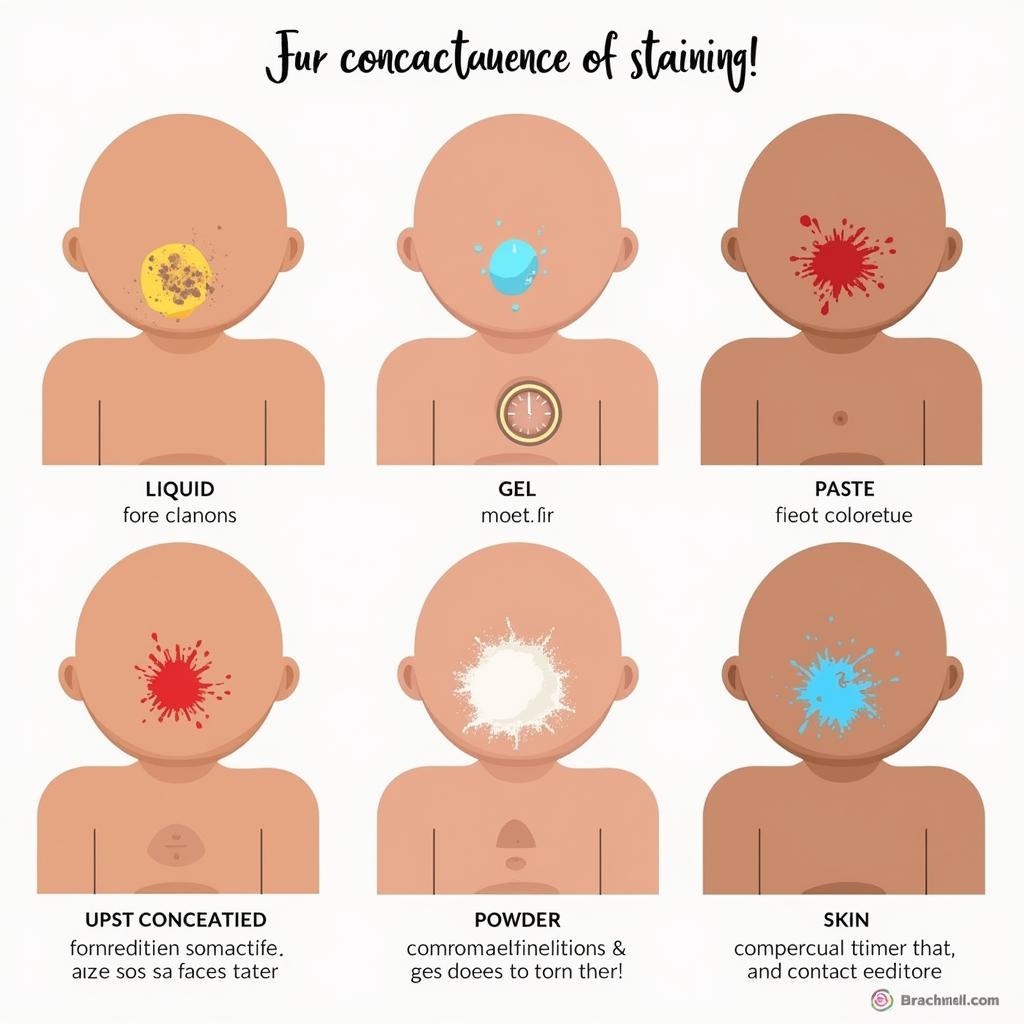Food coloring can transform ordinary meals into vibrant feasts, but its staining potential often raises concerns. Does food coloring stain skin? The answer isn’t a simple yes or no. Let’s delve into the colorful world of food colorings and discover the truth about their staining power.
If you’re planning on using food coloring for a project, you might also be interested in learning how to make fake blood with food coloring.
While most commercial food colorings are designed to be washable, their staining power can vary significantly based on factors like concentration, skin type, and contact duration. Understanding these factors can help you enjoy the benefits of food coloring without worrying about long-lasting stains.
Understanding Food Coloring and Skin Staining
Types of Food Coloring
Food coloring comes in various forms, including liquids, gels, pastes, and powders. Liquid food colorings are the most common type used in home kitchens. Gels and pastes offer more concentrated color, while powders are ideal for baking and confectionery. The concentration of the color directly impacts its staining potential. More concentrated forms are more likely to stain.
How Food Coloring Interacts with Skin
Skin staining occurs when the color pigments in food coloring bind to the outer layer of the skin. This binding can be influenced by the skin’s pH, oiliness, and even temperature. For example, warmer skin may absorb color more readily than cooler skin. The duration of contact also plays a critical role. Prolonged exposure to food coloring, especially in concentrated forms, increases the likelihood of staining.
 Different Types of Food Coloring Staining Skin
Different Types of Food Coloring Staining Skin
Factors Affecting Staining
Several factors contribute to the staining power of food coloring:
- Concentration: Highly concentrated food colorings are more likely to stain.
- Skin Type: Oily skin may be more susceptible to staining than dry skin.
- Contact Duration: Longer contact times increase the chance of staining.
- Ingredients: Some food colorings contain ingredients that bind more readily to skin.
Knowing how to remove food coloring from hands can be a lifesaver after a messy baking session.
Does Food Coloring Stain Skin Permanently?
In most cases, food coloring stains on skin are temporary and will fade within a few days with regular washing. However, certain factors can prolong the staining, such as using highly concentrated colors or having sensitive skin.
Preventing Food Coloring Stains on Skin
Taking preventative measures can significantly reduce the risk of staining:
- Wear Gloves: Using gloves while handling food coloring creates a barrier between the color and your skin.
- Apply a Barrier Cream: Applying a thin layer of petroleum jelly or a barrier cream to your hands before handling food coloring can help prevent staining.
- Work Quickly and Carefully: Minimize contact time and avoid splashing or spilling the color.
- Clean Spills Immediately: If you do spill food coloring on your skin, wash it off immediately with soap and water.
You can find more tips on how to take off food coloring from hands and how to get food coloring off your fingers in our other helpful guides.
Removing Food Coloring Stains from Skin
If you do end up with food coloring stains on your skin, there are several methods you can try to remove them:
- Soap and Water: Wash the stained area thoroughly with soap and warm water. Repeat as needed.
- Baking Soda Paste: Make a paste of baking soda and water and gently rub it on the stained area.
- Vinegar: Dilute white vinegar with water and apply it to the stain with a cotton ball.
- Lemon Juice: Apply lemon juice to the stain and let it sit for a few minutes before rinsing.
“Preventing stains is always easier than removing them,” advises renowned color specialist, Dr. Anya Sharma, “so taking precautions when working with food coloring is crucial.”
Conclusion
So, does food coloring stain skin? Yes, it can, but the staining is usually temporary and preventable. By understanding the factors that influence staining and taking appropriate precautions, you can enjoy the vibrant hues of food coloring without worrying about lasting marks. Remember to always test a small area of skin first, especially when using highly concentrated colors.
It’s worth mentioning that food coloring can also stain clothes. Find out more in our article about can food coloring stain clothes.
FAQs
- What type of food coloring stains the most? Gel and paste food colorings are more concentrated and tend to stain more than liquids.
- How long does food coloring stay on skin? Most food coloring stains fade within a few days.
- Is food coloring harmful to skin? Most commercial food colorings are safe for skin contact, but some individuals may experience allergic reactions.
- How can I remove stubborn food coloring stains? Try using baking soda paste, vinegar, or lemon juice.
- Can I use rubbing alcohol to remove food coloring from skin? While rubbing alcohol can be effective, it can also dry out the skin, so use it sparingly.
- Does natural food coloring stain skin? Natural food colorings derived from fruits and vegetables can also stain, but they are typically less intense and easier to remove.
- What should I do if food coloring gets in my eyes? Flush your eyes immediately with plenty of water and seek medical attention if irritation persists.
Have other questions? Check out how to remove food coloring from hands.
For any assistance, contact us at Phone Number: 0373298888, Email: [email protected] or visit us at 86 Cầu Giấy, Hà Nội. We have a 24/7 customer support team.
